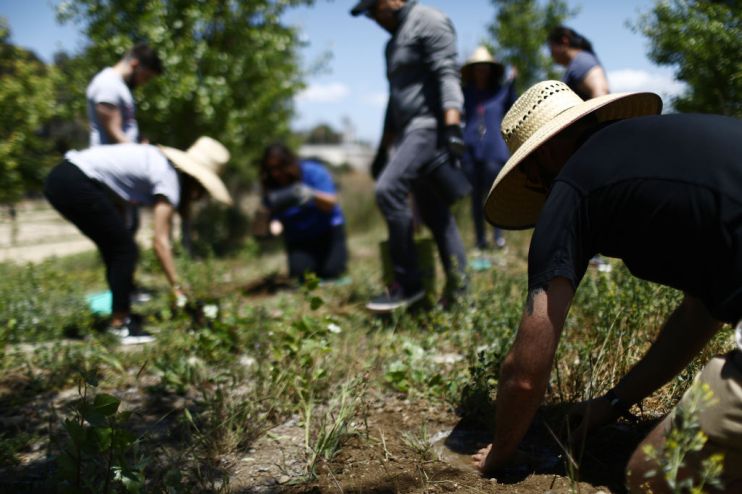Earth Day: 50 years on, there is impressive progress to cheer

As we celebrate the 50th anniversary of Earth Day and the birth of modern environmentalism, we should pause to give each other a virtual “high five” for the impressive environmental progress society has accomplished during this span. We should also think about the ways we can make the next 50 far more effective.
Case in point: Many people are surprised to hear that the environment is improving. A lot. This surprise grows from the unfortunate flipside of the Earth Day legacy, which too often can focus on doom and alarmism that can make us despondent and drive poor policies.
Early environmentalism from the 1970s helped focus societies on important environmental priorities such as polluted rivers —the Cuyahoga River in the U.S. even famously caught fire in 1969 — and fouled air, with soot and smog killing millions.
Here, we have made great strides. Most bodies of water in rich countries are much cleaner, since we are prosperous enough to clean up our messes. In the U.S., for instance, a recent comprehensive study showed that “water pollution concentrations have fallen substantially” over the past fifty years. And a stunning 3.8 billion people in the world have gained access to clean drinking water over multiple decades from 1970.
Air pollution, the world’s biggest environmental killer, has seen even greater improvements. Outdoor air pollution has declined dramatically in rich countries, in no small measure due to attention from 1970’s Earth Day and subsequent actions like the landmark U.S. Clean Air Act later that year.
For the world’s poor, the most deadly air pollution is indoors. Almost 3 billion of the world’s poorest still cook and keep warm with dirty fuels like dung, cardboard and wood, and the World Health Organization estimates the effects are equivalent to smoking two packs of cigarettes each day.
Since 1970, the death risk across the world from indoor air pollution has been cut by more than half.
Despite the amazing progress, both indoor and outdoor air pollution still kills 8 million people. At least 2 billion people still use drinking water sources contaminated by feces. So, for the next 50 years, we still have our work cut out for us. Things are far better, but they are still not okay.
But curiously, this is not our typical environmental conversation. We don’t emphasize enormous improvements, and we don’t focus on our vital, unfinished business in water and air. Instead, the standard story is how the environment is getting ever worse – how we’re hurtling towards catastrophe. This tradition also started with Earth Day.
By 1970, many leading environmentalists were predicting the end of the world. Stanford ecologist Paul Ehrlich, being a frequent guest on the popular late-night Johnny Carson TV show, was perhaps the leading apocalypse proponent. For Earth Day, he predicted that environmental deterioration would kill 65 million Americans, and globally four billion would die before the year 2000. Life Magazine also saw impending doom, predicting air pollution would be so bad that Americans would have to wear gas masks in the 1980s, and that pollution would block half the sunlight.
Not only were these predictions spectacularly wrong, but they were outlandish when first made. Yet, in a world where more alarm gets more attention, they started a trend of framing environmental issues in worst-case ways. This tone scares and depresses – and this likely skews our focus and spending.
Today, climate change takes up the vast majority of the environmental conversation, and it is definitely a real problem. However, it also is too often framed in exaggerated fashion, with predictable results: a new survey shows that almost half of humanity believes global warming likely will make humans extinct.
This is entirely unwarranted. The U.N. Climate Panel, the gold standard of climate research, finds that the overall impact of global warming by the 2070s will be equivalent to a 0.2 to 2% loss in average income. That is a problem, not the end of the world.
Such fear also makes us prioritize poorly. Climate change mitigation today costs more than $400 billion each year in renewable subsidies and other costly climate policies. Yet, we spend much less on making water and air cleaner for the billions with basic needs.
We can rightly look back on Earth Day with pride for the attention it has brought to the environment. But we need to curb the exaggerations, to make sure we actually leave the environment in the best possible state.
Bjørn Lomborg is a Danish author and founder of the Copenhagen Consensus think tank. He is the author of 2001 book The Sceptical Environmentalist and former Director of the Danish government’s Environmental Assessment Institute.